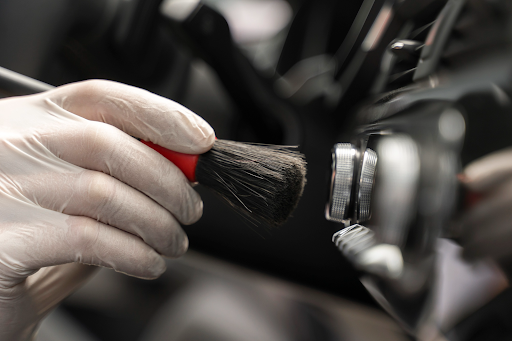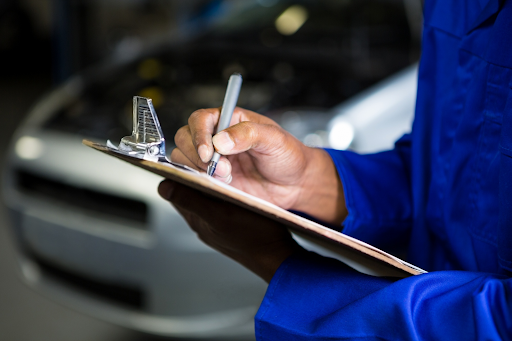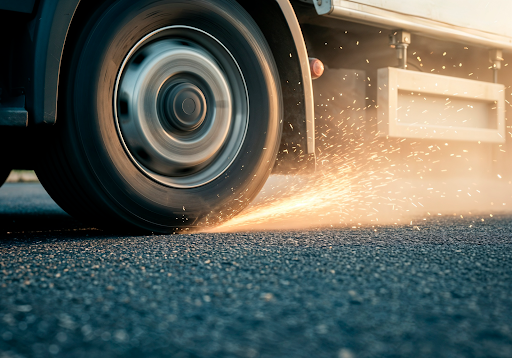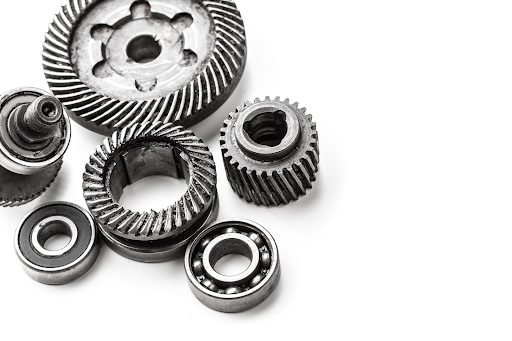Rubber components play a vital role in the health and durability of commercial vehicles. These parts may seem minor, but they are essential to protect against vibrations, prevent leaks, and maintain a proper seal in critical systems. From hoses to rubber seals and belts, they work silently but constantly. Yet, they are often overlooked during routine maintenance.
When rubber parts are ignored, the risk of cracks, brittleness, and complete failure increases. This can lead to poor performance, increased downtime, and safety hazards on the road. That’s why cleaning and maintaining them should be a regular part of any service schedule. Whether it’s a truck running long haul or a construction vehicle exposed to dirt and heat daily, the health of these parts should never be underestimated.
How Rubber Reacts Under Pressure in Vehicle Components
Rubber has its own characteristics. It is elastic, flexible, and resistant to wear. But it is also sensitive to harsh chemicals, extreme temperatures, and prolonged UV exposure. Over time, rubber can harden or degrade if not cared for properly.
Commercial vehicles are especially exposed to tough environments. Dust, oil, grease, and heat can slowly impact the quality of rubber parts. This makes cleaning essential, not just for appearance but for preserving function. Even the smallest crack can expand under pressure, leading to component failure.
A few key areas where rubber is found in commercial vehicles include:
- Radiator and coolant hoses
- Rubber seals in engine gaskets
- Suspension bushings
- Belts for engine timing and auxiliary functions
Keeping these parts in good shape ensures the truck runs safely and smoothly.
-
Clean with the Right Products, Not Harsh Ones
The first step in care is cleaning. However, using the wrong product can do more harm than good. Never use gasoline, kerosene, or bleach on rubber components. These chemicals will dry out the material and cause it to crack over time.
Instead, use mild soap and water for regular cleaning. For deep cleaning, a rubber-safe degreaser or specialized automotive rubber cleaner is a better option. Use a soft cloth or sponge to gently wipe off debris and oil buildup. Avoid wire brushes or harsh scrubbing tools.
Let the part dry fully before checking for any signs of wear. This helps in identifying early damage that might otherwise go unnoticed.
-
Inspect Regularly and Replace on Time
Routine inspection is the easiest and most effective method of maintenance. During regular servicing, mechanics should look for signs like:
- Surface cracks
- Stiffness or loss of flexibility
- Oil swelling
- Looseness in seals or belts
These signs indicate wear that needs attention. In many cases, the damage is invisible to an untrained eye. That’s why periodic checks by professionals are necessary.
If a rubber part is not doing its job, it can affect nearby components too. For example, a worn-out belt can impact the engine’s cooling or power steering systems. Likewise, a loose seal can allow oil leaks or water intrusion.
Replacing rubber components on time prevents a small issue from becoming a costly breakdown later. Always go for certified parts that match the vehicle’s specifications. This is critical for trucks and commercial vehicles that operate under heavy loads.
-
Preserve Functionality with Protective Measures
It’s not just about cleaning and replacing — protecting rubber from environmental damage is just as important. Applying a rubber conditioner can help preserve flexibility and prevent cracks. These conditioners form a protective layer that blocks UV rays and resists moisture.
Also, avoid parking vehicles for long periods under direct sunlight. Sunlight can accelerate rubber aging. If parked for extended durations, try to keep the vehicle in a shaded or covered area.
Another important tip is to keep rubber parts away from sharp tools during servicing. Accidental cuts or abrasions can lead to premature failure.
-
Storage Matters When Spare Rubber Parts Are Involved
When rubber parts are not in use and kept in storage, their condition can still degrade. Heat, humidity, and sunlight in storage spaces are just as harmful. Store rubber components in a cool, dry place, preferably in sealed packaging.
If storing for more than a few weeks, make sure the items are not under heavy weight. Rubber takes shape easily and can deform under pressure, even when not in use. This is especially true for belts and hoses.
Warehouses storing rubber parts should be clean, ventilated, and kept away from equipment that emits heat. Also, never hang rubber parts on nails or pegs. This can stretch them and damage their structural integrity.
Lasting Results Come from Routine and Quality
A repair alone won’t ensure a long vehicle life — it’s regular maintenance that truly makes the difference. Clean parts tend to last longer, routine inspections help catch issues early, and timely replacements prevent costly breakdowns.
Whether you’re a transporter or fleet manager, managing rubber parts shouldn’t be viewed as just another technical chore. It should be treated as a business-critical priority. A failed hose or snapped belt doesn’t just damage the vehicle — it halts operations and delays deliveries.
That’s why paying attention to even the smallest rubber component leads to better uptime, improved efficiency, and uninterrupted performance on the road.
Every Component Counts in the Bigger Picture
Durability and quality should always be a top concern when it comes to commercial vehicle maintenance. For those who value reliability and safety, it’s not just about getting back on the road — it’s about staying there with confidence.
The emphasis on small parts is growing as maintenance teams understand their silent but crucial role. Cleanliness, smart storage, and timely replacement are all part of the bigger picture in commercial vehicle care.
Tata Genuine Parts offers a trusted solution for commercial vehicle operators across India. With a wide range of spare parts tailored specifically for Tata Motors trucks and buses, they ensure reliability from engine components to rubber parts and beyond. Their parts are engineered to OEM standards, supporting better vehicle performance across various Indian road conditions.





